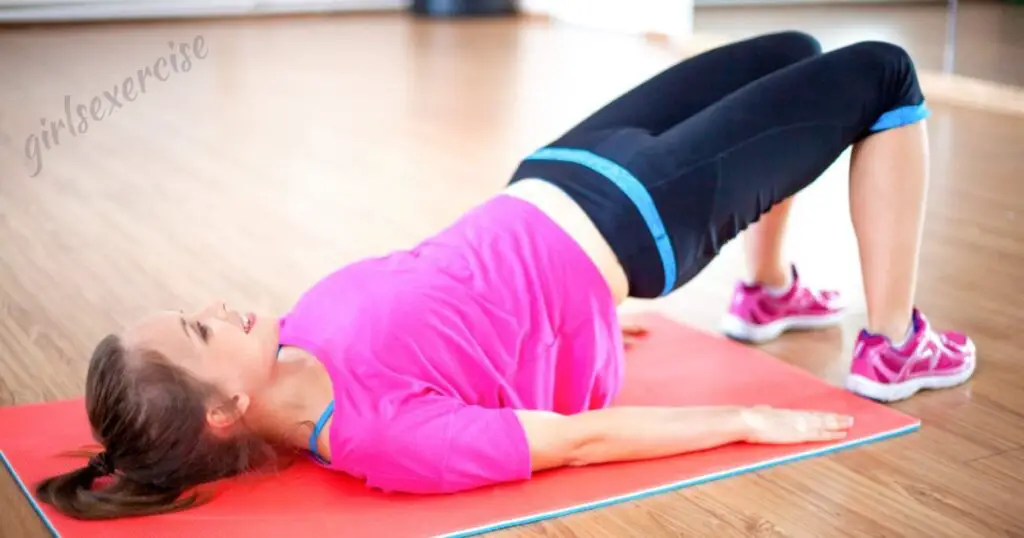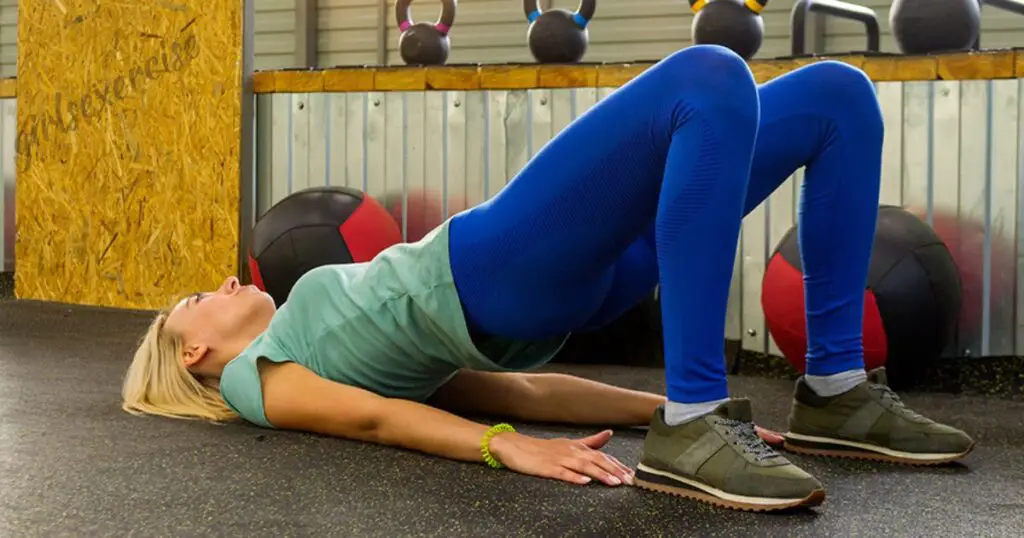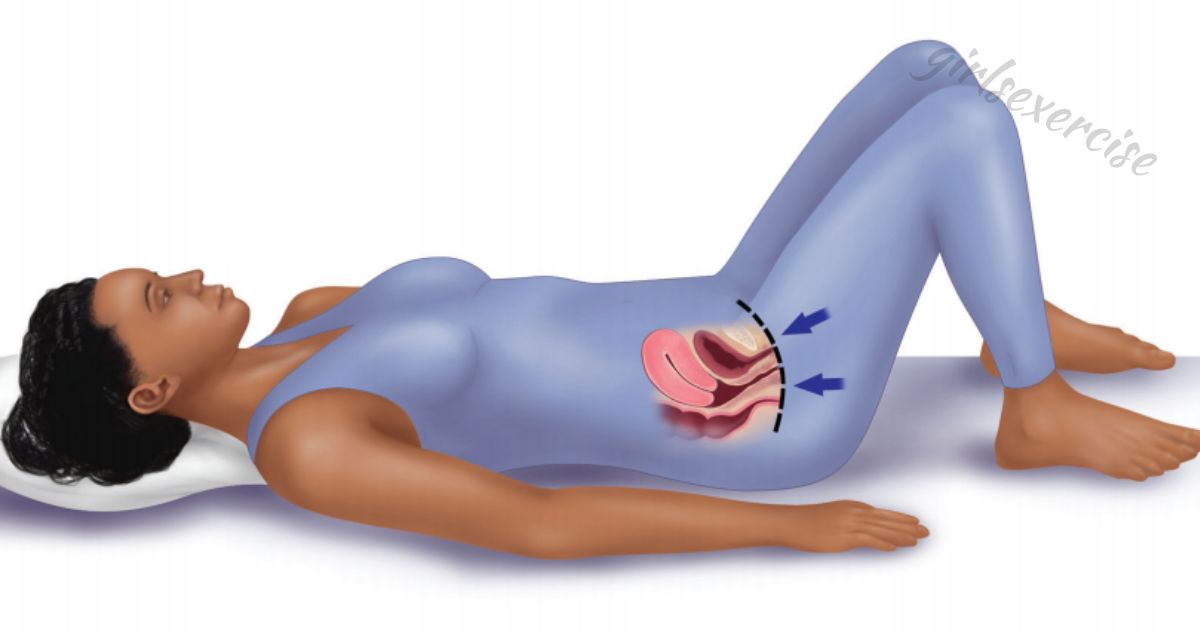Pelvic floor exercises for women, colloquially known as Kegel exercises, form a cornerstone of holistic well-being. These exercises involve intentional contraction and relaxation of the muscles supporting the bladder, uterus, and rectum.
Far beyond a mere physical routine, they are a dynamic pathway to enhanced bladder control, robust reproductive health, and elevated sexual satisfaction. These exercises empower women through precision and understanding of their pelvic anatomy.
As a proactive measure, they become a daily ritual, seamlessly integrated into routines. Let’s delve deeper into the intricacies of these exercises, exploring their impact on various aspects of women’s health and vitality.
Understanding Pelvic Floor Exercises:

Pelvic floor exercises, often referred to as Kegel exercises, hold a key role in promoting women’s health by directly targeting the intricate network of muscles that support the bladder, uterus, rectum, and other pelvic organs.
These muscles are essential for maintaining continence, supporting reproductive function, and contributing to overall sexual satisfaction.
The Gentle Mechanics of Pelvic Floor Muscles
The pelvic floor comprises muscles that form a gentle hammock-like structure across the pelvic region. These muscles work harmoniously to support pelvic organs and aid in regulating bladder and bowel functions.
Understanding the nuances of this anatomy is crucial; these muscles not only contribute to continence but also play a significant role in enhancing core stability and overall posture.
Pelvic floor exercises are designed to delicately strengthen and tone these muscles through gentle contractions and relaxations. The exercises involve isolating and engaging the pelvic floor muscles without involving adjacent muscle groups like the abdomen, thighs, or buttocks.
Benefits Embracing Beyond Bladder Harmony
The positive outcomes of these exercises extend beyond simply improving bladder control. They become invaluable during various stages of a woman’s life. For instance, during pregnancy, reinforced pelvic floor muscles can assist in the birthing process.
Potentially minimizing the risk of perineal tearing and supporting postpartum recovery. Furthermore, post-childbirth, consistent practice aids in reestablishing pelvic muscle tone, assisting in the prevention or alleviation of urinary incontinence concerns.
Nurturing Reproductive Health and Sensual Well-Being
Beyond physical well-being, pelvic floor exercises profoundly influence reproductive health and sensual satisfaction. Strengthened pelvic floor muscles can heighten sensations during intimate moments for both partners.
Women may discover increased arousal and the potential for more fulfilling orgasms owing to improved muscle tone and control. Additionally, these exercises contribute to the sexual well-being of postmenopausal women by counteracting some of the physiological changes that may affect sexual function.
It is crucial to acknowledge that while these exercises offer considerable benefits, their correct and consistent performance is key. Seeking guidance from a healthcare professional, especially for personalized advice, can enhance the effectiveness of these exercises.
Understanding the intricacies of pelvic floor exercises empowers women to take gentle, proactive steps toward better pelvic health and overall well-being.
Benefits And Importance For Women:

Empowering Bladder Control and Continence
One of the primary advantages lies in fortifying bladder control. By strengthening the pelvic floor muscles, these exercises play a pivotal role in managing and preventing urinary incontinence.
This enhancement in control is particularly crucial during pregnancy and after childbirth, offering relief and support during these transformative phases.
Support Across Life’s Phases
The importance of these exercises transcends various life stages. During pregnancy, they aid in preparing the body for childbirth, potentially reducing complications and easing postpartum recovery.
Post-childbirth, they facilitate the restoration of muscle tone, addressing urinary incontinence concerns commonly experienced by new mothers. Additionally, these exercises benefit women of all ages by contributing to pelvic organ support and continence.
Beyond Bladder Health: Comprehensive Well-Being
Apart from bolstering bladder function, these exercises play a multifaceted role in women’s health. They contribute significantly to maintaining reproductive health and can positively impact sexual satisfaction.
Strengthened pelvic floor muscles can lead to enhanced sensations during intimacy, potentially elevating arousal and overall sexual experiences for both partners.
Moreover, they can support postmenopausal women in managing changes affecting sexual function, fostering a sense of confidence and well-being.
Understanding the benefits and importance of pelvic floor exercises empowers women to take proactive steps toward their own health and comfort. Incorporating these exercises into daily routines can lead to enduring advantages, offering increased control, support, and overall well-being.
Techniques And Methods:

Identifying the Pelvic Floor Muscles
The foundation of effective pelvic floor exercises begins with accurately identifying the targeted muscles. The pelvic floor muscles are situated at the base of the pelvis and can be isolated by mimicking the actions of stopping the flow of urine or preventing the passage of gas. Mastery in isolating these muscles is crucial for optimal exercise performance.
Precision in Muscle Engagement
Engaging the pelvic floor muscles without inadvertently involving surrounding muscle groups is paramount. It requires a focused effort to contract these muscles independently.
Avoid unnecessary tension in adjacent areas such as the abdomen, thighs, or buttocks. Precision in muscle engagement ensures the effectiveness of the exercise regimen.
Kegel Exercises: The Core Foundation
Kegel exercises form the cornerstone of pelvic floor workouts. They involve contracting the pelvic floor muscles for a set duration, typically starting with shorter holds and gradually increasing the duration as muscle strength improves.
These exercises can be performed in various positions—sitting, standing, or lying down—to diversify muscle engagement.
Biofeedback and Devices
Advanced techniques often involve biofeedback devices to enhance exercise precision. These devices offer real-time feedback, guiding individuals to isolate and contract the correct muscles effectively.
Additionally, resistance devices such as vaginal cones or weights can be incorporated to add challenge and further strengthen the pelvic floor.
Consistency and Regularity
Consistency is key to deriving maximum benefits from pelvic floor exercises. Integrating them into daily routines—such as associating exercises with routine activities like brushing teeth or waiting for a meal to cook—can aid in maintaining consistency. Establishing a dedicated exercise routine ensures adherence and progress.
Gradual Progression
Starting with a manageable routine and gradually increasing the intensity and duration of exercises is advisable. Over time, as muscle strength improves, individuals can progress to more challenging variations or incorporate additional techniques to continually stimulate muscle growth and resilience.
Mastering the techniques and methods associated with pelvic floor exercises empowers individuals to proactively manage their pelvic health. Precision, consistency, and gradual progression are the pillars for achieving optimal results and ensuring a strong and resilient pelvic floor.
Incorporating Pelvic Floor Exercises Into Daily Routine:

Identifying Opportune Moments
Incorporating pelvic floor exercises into daily routines begins with identifying opportune moments throughout the day. Activities like brushing teeth, waiting for a traffic signal, or standing in line provides perfect intervals to discreetly engage in these exercises without disrupting daily tasks.
Diverse Positions for Exercise
One of the beauties of pelvic floor exercises lies in their adaptability to different positions. Whether seated at a desk, standing in a queue, or lying in bed, these exercises can be effortlessly integrated. This versatility allows individuals to engage in exercises comfortably, irrespective of their daily schedule.
Routine Reinforcement Techniques
Establishing a routine for pelvic floor exercises requires intentional effort. Employing reminders, such as setting alarms or linking exercises to daily activities, serves as a cue to reinforce consistency. Gradually, these exercises become ingrained habits, seamlessly integrated into daily life.
Incorporating Variety and Fun
To sustain long-term engagement, infusing variety into exercises is beneficial. Switching between different positions or incorporating relaxation techniques can keep the routine interesting. Engaging in exercises with a sense of playfulness or by incorporating music or mindfulness can make the experience enjoyable.
Partnering for Motivation
Engaging in pelvic floor exercises can be a shared endeavor. Partnering with a friend, spouse, or family member not only fosters accountability but also provides mutual motivation. Jointly setting exercise goals and celebrating milestones can make the routine more rewarding.
Seeking Online Communities and Resources
Online communities and resources dedicated to pelvic floor health offer a wealth of support. These platforms provide guidance, tips, and a sense of community. Engaging with like-minded individuals fosters encouragement, and advice exchange, and serves as a source of motivation.
Acknowledging Achievements
Recognizing and celebrating small victories along the journey of incorporating pelvic floor exercises into daily life is essential. Acknowledging progress, no matter how small reinforces the commitment and encourages continued dedication.
Adaptation to Evolving Routines
As routines evolve, it’s crucial to adapt exercises accordingly. Life changes and schedules shift, and incorporating these exercises amidst fluctuations demonstrates adaptability. Adjusting exercises to fit new routines ensures their consistent presence despite life’s dynamic nature.
Integrating pelvic floor exercises into daily routines is an investment in long-term pelvic health. By seamlessly weaving exercises into daily life, individuals foster consistency, build healthy habits, and pave the way for a resilient and thriving pelvic floor.
Consultation And Professional Guidance:

Understanding Individual Needs
Consulting a healthcare professional for pelvic floor exercises enables a personalized approach. These specialists assess individual needs, considering factors like age, health conditions, childbirth history, and specific concerns to tailor exercises for optimal effectiveness.
Precision in Technique
Professional guidance ensures the accurate execution of pelvic floor exercises. Experts educate individuals on proper techniques, offering hands-on guidance to isolate and engage the pelvic floor muscles effectively. This precision is pivotal for maximizing benefits and preventing incorrect muscle engagement.
Addressing Unique Health Challenges
Health professionals offer invaluable insights for individuals facing specific pelvic health challenges. Whether dealing with pelvic pain, postpartum recovery, or conditions like pelvic organ prolapse, their expertise provides tailored exercises to address these concerns sensitively and effectively.
Collaborative Approach to Recovery
For individuals recovering from surgeries or experiencing complex health issues affecting the pelvic floor, a collaborative approach between healthcare professionals is essential. Coordinated efforts between physiotherapists, gynecologists, and pelvic health specialists ensure a holistic and supportive recovery journey.
Optimising Exercise Regimens
Healthcare professionals optimize exercise regimens to suit individual capabilities, gradually increasing intensity and duration as muscles strengthen. Their guidance minimizes the risk of overexertion and ensures a safe and effective progression.
Identifying Red Flags and Adjustments
Professionals are adept at recognizing potential issues or discomfort during exercises. Their expertise allows for timely adjustments, preventing injury or exacerbation of existing conditions. Regular check-ins enable them to identify red flags and modify exercises accordingly.
Education and Empowerment
Consultation with professionals extends beyond exercises; it’s an opportunity for education. Individuals gain a deeper understanding of their pelvic health, empowering them to actively participate in their well-being through informed decisions and self-care practices.
Ongoing Support and Guidance
The guidance of healthcare professionals doesn’t end with the initial consultation. They provide ongoing support, monitor progress, address concerns, and adjust exercise plans as needed, ensuring sustained progress and pelvic health maintenance.
Seeking consultation and professional guidance for pelvic floor exercises is an investment in personalized care, ensuring safe and effective exercises tailored to individual needs. It’s a proactive step towards optimal pelvic health, empowerment, and well-being.
Conclusion:
Pelvic floor exercises serve as a crucial component of women’s health, offering a myriad of benefits beyond merely strengthening muscles. By targeting the intricate network of pelvic floor muscles, these exercises support bladder control, aid in reproductive health, and contribute to sexual satisfaction.
Embracing these exercises into daily routines, seeking professional guidance for precision, and understanding their far-reaching impact empower women to take proactive steps toward enhanced pelvic health and overall well-being.
With consistency, personalized approaches, and ongoing support, pelvic floor exercises become an integral part of a holistic approach to women’s health, fostering strength, confidence, and vitality across various stages of life.
Faqs About Pelvic Floor Exercises For Women:
What Are Pelvic Floor Exercises, and Why Are They Important for Women?
Pelvic floor exercises, also known as Kegels, involve contracting and relaxing the muscles supporting the bladder, uterus, and rectum. They’re crucial for women to improve bladder control, support reproductive health, and enhance sexual satisfaction.
How Do I Identify My Pelvic Floor Muscles to Start These Exercises?
To identify the pelvic floor muscles, try stopping the flow of urine midstream or tightening the muscles that prevent passing gas. Once identified, these muscles can be engaged without involving other surrounding muscle groups.
Can Pelvic Floor Exercises Help with Pregnancy and Postpartum Recovery?
Yes, these exercises can be incredibly beneficial. Strengthening the pelvic floor muscles during pregnancy can aid in childbirth and reduce the risk of tearing. Postpartum, regular practice can assist in restoring muscle tone and alleviate urinary incontinence.
Are There Different Techniques or Variations of Pelvic Floor Exercises?
Yes, there are various techniques. Kegel exercises involve contracting and holding the muscles, gradually increasing hold times. Some variations include fast contractions, biofeedback devices for precision, or incorporating resistance tools for added challenge.
How Frequently Should I Perform Pelvic Floor Exercises?
Consistency matters more than frequency. Aim for daily practice; start with a few repetitions and gradually increase over time. Find moments in your day—like while brushing your teeth or waiting in line—to incorporate these exercises.
Can Pelvic Floor Exercises Improve Sexual Satisfaction?
Absolutely. Strengthened pelvic floor muscles can enhance sensations during intercourse, leading to increased arousal and potentially better orgasms. They can also aid postmenopausal women in maintaining sexual wellness.
Should I Consult a Professional Before Starting Pelvic Floor Exercises?
Consulting a healthcare professional, especially if you have specific pelvic health concerns, is advisable. They can offer personalized guidance, ensure correct technique, and address any underlying issues to optimize the effectiveness of these exercises.




Hi, I really enjoy your article. Could we continue to communicate about your posts on AOL? I need a specialist in this field to solve a problem I’m having. Perhaps you could be that person. I look forward to speaking with you.